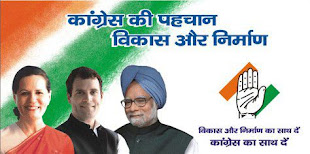Prabhavati Akashi
Launching the Jawaharlal Nehru National Solar Mission on 11th January, 2010, Prime Minister Dr. Manmohan Singh set out a vision for building a Solar India. Now efforts are on to giving wings to his dream. An important step in this direction is the recent announcement of a set of guidelines or ground rules for off-grid or decentralized applications. The
National Solar Mission will be implemented in 3 stages leading to an installed capacity of 20,000 MW of grid power, 2,000 MW of off-grid solar applications and 20 million sq. m. solar thermal collector area and solar lighting for 20 million households by the end of the 13th Five Year Plan in 2022.
The immediate aim of the Mission is to focus on setting up an enabling environment for solar technology penetration in the country both at centralized and decentralized levels. Apart from feeding 1,000 MW of solar power (solar thermal and photovoltaic) to the grid, the first phase (up to March 2013) will focus on promoting 200 MW capacity of off-grid solar energy applications to meet/supplement power, heating and cooling energy requirements and promoting 100 MW capacity of tail end and other small grid connected solar power plants.
Off Grid-Solar Applications
Off-grid solar energy applications have tremendous potential in reaching out to people in rural and remote areas by providing lighting and basic energy services to them. These include small solar plants, roof-top solar power applications, solar lights and solar lanterns, solar thermal heating applications such as water heaters for residential, commercial, institutional and industrial applications, etc.
There are many other potential applications. Like off-grid usage, decentralized solar applications too have an immense potential to generate power and reduce diesel consumption particularly during daytime. Roof-top solar power applications for day-time use and abatement of diesel and usage in industrial areas with substantial power shortages could be potential thrust areas. Similarly, solar thermal heating applications, such as water heaters for residential, commercial, institutional and industrial applications are those which are already commercially viable or near grid parity. These and several other solar thermal applications can help urban areas and industries in reducing their dependence on grid besides reducing diesel/gas consumption.
Advantages
·There are a large number of areas in the country, which do not have access to electricity. Off-grid solar energy applications are the easiest to reach out to people in rural and remote areas.
·There are substantial losses as electricity flows from points of generation to distribution. Feeding of power at consumption points would not only help reduce these losses but also help strengthen the grid and its performance and ease the flow of electricity downwards.
·Feeding power to LT/11 KV grid is thus yet another important application, which can help our villages and also industry by providing additional powers to run irrigation pump sets or meet the unmet power requirement in the daytime, as well as avoid use of diesel generators.
·Small solar plants of 1-2 MW capacity can support a large number of irrigation pumps. Many States are keen to set up such plants to augment power supply especially in rural areas. A network of such plants across India will work wonders!
Salient Features
Dr. Farooq Abdullah, Union Minister for New & Renewable Energy launched the guidelines at a function in New Delhi recently. Some of the important features of the guidelines are as follows:
Scope of the scheme
The scheme would be applicable to all parts of India and would, to begin with, be co-terminus with Phase-I of the Jawaharlal Nehru National Solar Mission and will, inter alia, focus on promoting off-grid and decentralized systems, including hybrid systems to meet/supplement power, electricity/power, heating and cooling energy requirements.
Implementation
The Scheme would be implemented through multiple channel partners for rapid up-scaling in an inclusive mode. Channel partners could include Renewable Energy Service providing Companies, Financial Institutions including microfinance institutions acting as Aggregators, Financial Integrators, System Integrators, Programme Administrators.
Funding
Funding under the scheme would be in Project mode, i.e. there must be a project report which would, inter alia, include client details, technical & financial details, O&M and monitoring arrangements. The total project cost shall be funded through a mix of debt and incentives where the promoters’ equity contribution would be at least 20% (unless otherwise specified).
MNRE would provide financial support through a combination of 30 % subsidy and/or 5% interest bearing loans .
Release of Funds
The release of funds for the project shall be backended as reimbursement on completion and verification thereof.
Approval
The Committee constituted by MNRE, would approve the project within 45 days of receiving the project.
Project Management Consultant
The Government would engage a reputed agency as a Project Management Consultant (PMC). This agency would handle all the processes such as assistance for formulation, appraisal and screening of proposals preceding the formal approval which would be a sovereign function of MNRE. It would also assist the Ministry in formulating the detailed implementation guidelines/ formats, if any.
Monitoring and Evaluation
The Scheme envisages IT enabled monitoring and verification protocols for which 5% of the total project cost would be available to the various channels partners for compliance.
Technical Requirements
The scheme would require the project proponents to strictly adhere to the national/international standards specified by the Ministry from time to time.
Supporting Innovation
The Ministry could provide 100% CFA for undertaking pilot and demonstration projects for demonstrating new and innovative applications of solar systems.9
Interpretation of the Guidelines
In case of any ambiguity in interpretation of any of the provisions of these guidelines, the decision of the Ministry shall be final.
Review
The scheme would be reviewed by an Internal Review Committee at 6 month/yearly interval and modifications in-therein would be incorporated by the Ministry.
Dr. Abdullah has rightly said, “the guidelines would create the ecosystem that encourages all of the above and that State Governments, entrepreneurs and beneficiaries will take abundant advantage of the schemes and fulfill our dreams for a strong and vibrant Solar India.”



























0 Comments